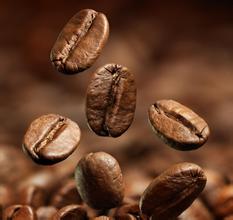Description of Flavor and Flavor of Coffee Tree Flavor cycle introduction of Grinding scale for Variety characteristics of Manor treatment
Coffee tree flowering cycle Flavor Description Manor treatment Variety characteristics Grinding scale Introduction
There are more than 100 coffee origins in the world, and the coffee beans produced are unique. Coffee beans are blended to balance the flavor of coffee and create an unparalleled taste. Single coffee beans generally lack the complex flavors necessary to make delicious coffee. Many coffee blends contain three to seven different types of coffee beans. A master roaster knows the characteristics of each bean and blends them artistically to create a whole new flavor. Yet the knowledge of a master roaster blending coffee beans is one of the most highly classified secrets in the industry. Baking first or mixing first is always a question of debate among bakers. Generally speaking, roasting and mixing each individual coffee maximizes the different flavor characteristics of each coffee. The time required from flowering to ripening of coffee berries is influenced by several factors, including coffee variety, climatic conditions and agronomic practices. For Arabica coffee, it takes about 6-9 months, which means that it can be harvested from this time in Yunnan. The harvest season in the coffee belt begins in October (September in warmer regions) and continues until February. While harvesting can be mechanized when conditions permit, most countries still harvest coffee by hand, which is a labour-intensive and costly operation. Therefore it is mainly used for picking high-quality Arabica coffee beans. This is only the first step in the process of producing high-quality coffee, and it is also the method of picking coffee in Yunnan. Fresh fruits need to be peeled on the day of picking, followed by fermentation, washing and drying to ensure that coffee beans maintain the purest original mellow aroma and taste.
When high-quality coffee beans are picked, the most important steps in making it gourmet coffee are roasting and blending. Coffee beans from different origins therefore present different flavors of fragrance, dryness, alcohol, bitterness and acidity. A master baker must have the temperament of an artist and the rigor of a scientist. This ensures that the roasting process carbonizes the sugar and other carbohydrates in the coffee, resulting in the well-known coffee fat, producing a good coffee of high quality and consistent style. Technically, this subtle chemical isn't really fat (because it dissolves in water), but it is the source of coffee's aroma. Professional coffee is generally roasted in small batches. The different degrees of roasting of the coffee beans determine how the coffee beans will ultimately present flavor. The aroma extracted from coffee beans is directly proportional to the roasting time. The deeper the roasting degree, the less caffeine and acidity. The deeper the roast, the more burnt you taste and the lighter the coffee beans themselves taste.

Important Notice :
前街咖啡 FrontStreet Coffee has moved to new addredd:
FrontStreet Coffee Address: 315,Donghua East Road,GuangZhou
Tel:020 38364473
- Prev

The difference between sunburned and washed coffee beans is illustrated by the process of coffee solarization.
Coffee tanning process chart-the difference between sun-cured and washed coffee beans is very common in Brazil. The natural washing method is very similar to the water washing method, except that the natural washing method uses a high-pressure washing machine to remove the mucous membrane of the coffee surface, thus skipping the fermentation process. Several coffee and raw bean processing companies in Brazil and Colombia have patented this method and become
- Next

Introduction of coffee rough grinding suitable brewing utensils
Coffee rough grinding suitable for brewing appliances introduce the fineness grinding of mainstream household Italian coffee machine (1 scale of Pegasus bean grinder, feel granular with hand grinder). Of course, this is just a reference for everyone's experience, considering that the actual particle size of each bean grinder will be different, it is recommended that you adjust it according to your actual brewing habits and your own taste. Remember.
Related
- What brand of black coffee is the most authentic and delicious? what are the characteristics of the flavor of the authentic Rose Summer Black Coffee?
- Introduction to the principle and characteristics of the correct use of mocha pot A detailed course of mocha pot brewing coffee is described in five steps.
- Which is better, decaf or regular coffee? how is decaf made?
- How much is a bag of four cat coffee?
- How about four Cat Coffee or Nestle Coffee? why is it a cheap scam?
- Which is better, Yunnan four Cats Coffee or Nestle Coffee? How about cat coffee? is it a fake scam? why is it so cheap?
- How about Cat Coffee? what grade is a hoax? which instant coffee tastes better, four Cat Coffee, Nestle Coffee or G7 coffee?
- Process flow chart of coffee making-Starbucks coffee making process what coffee tastes good at Starbucks
- The top ten best coffee beans in the world Rose summer coffee or Tanzanian coffee tastes good
- Yunnan four cat coffee is good to drink?_four cat coffee is a big brand? four cat blue mountain coffee is fake?

